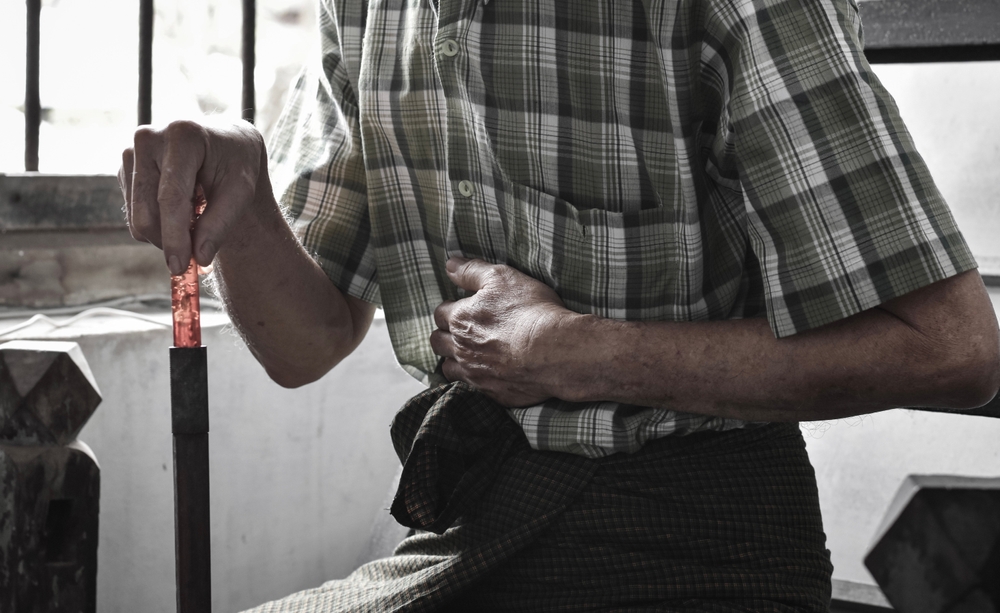The human pancreas is a solid glandular organ located in the abdomen. It’s about 15 to 20 cm long and 2 to 3 cm wide. The head of the pancreas is surrounded by the first part of the small intestine – the duodenum, with the tail of the pancreas covered by the stomach in front.
Normally, the pancreas plays a key role in both digestion and blood glucose regulation. Key enzymes to break down proteins and fats in our food are secreted by the pancreas when food enters the small intestine. Meanwhile, it produces hormones such as insulin and glucagon to keep our blood glucose level within a certain range.
Chronic pancreatitis refers to a condition when pancreas inflammation does not heal or improve over a long period of time. It eventually impairs a patient’s ability to digest food and make pancreatic hormones. Globally, pancreatitis is a major public health issue, with the highest incidence rate in East Asia, South Asia, and Western Europe.
What are the symptoms?
Symptoms of chronic pancreatitis usually come on over a long period of time, and patients might be asymptomatic at first. The following symptoms might occur when changes in the pancreas become advanced:
- Moderate to severe abdominal pain just below the ribs: This is the most common presentation of patients with both acute (insert acute pancreatitis article link once published) and chronic pancreatitis. In chronic pancreatitis, the pain usually comes on over a period of days to weeks.
- Pain radiates to the back
- Nausea and vomiting
- Fatty stools: stools are usually loose, pale and hard to flush
- Diarrhoea: when the pancreas can no longer produce digestive enzymes, food would not be properly digested and absorbed.
- Excessive thirst and fatigue: as a result of diabetes, which is a common complication of chronic pancreatitis.
What are the causes of Chronic Pancreatitis?
The most common causes of chronic pancreatitis are:
- Gallstones: when gallstones block the tube between the pancreas and the small intestine, the pancreas can no longer deliver digestive juices into the small intestine. The blockage results in self-digestion of the pancreas from the enzyme it produces.
- Heavy alcohol consumption: alcohol induces oxidative damage to many organs in our body, including the pancreas.
- Smoking: like alcohol, it induces oxidative damage to our body organs.
- Pancreatic cancer: can lead to both acute and chronic pancreatitis.
- Cystic fibrosis: a hereditary disease that causes mucus to build up in excretory gland vessels.
- Unresolved acute pancreatitis: acute pancreatitis without immediate treatment could lead to chronic pancreatitis.
Meanwhile, like all other diseases, both acute and chronic pancreatitis have genetic factors. People with a family history of chronic pancreatitis are more likely to develop pancreatitis in their lifespan.
What are the complications?
Without timely treatment, chronic pancreatitis can lead to serious consequences:
- Malnutrition: as mentioned above, the pancreas secrets enzymes that are important for nutrient absorption. Disruption of this function leads to minimal nutrient absorption along with weight loss and diarrhoea.
- Diabetes: pancreas regulates blood sugar levels using the hormone insulin and glucagon. When the pancreas is inflamed, it loses this ability. Diabetes is a condition when a person’s blood sugar level is above normal. Common symptoms include excessive thirst, urination, and appetite. People with diabetes are at higher risk of having a range of cardiovascular diseases.
- Pancreatic cancer: chronic pancreatitis is a major risk factor of pancreatic cancer.
- Metabolic bone disease: people with chronic pancreatitis are at greater risk of having osteopenia or osteoporosis – a reduction in bone density.
What are the treatment options?
Treatment options depend on the exact cause of patients’ acute pancreatitis. In general, they would include:
- Pain medications
- Avoid alcohol
- Stop smoking
- Diet management: low-fat, high-protein is usually recommended.
- Enzyme supplements: replace the enzymes originally produced by the pancreas.
- Surgery: only used to treat severe pain in people with chronic pancreatitis. Part or all of the pancreas could be removed.
- Annual checks for bone density and blood sugar level












